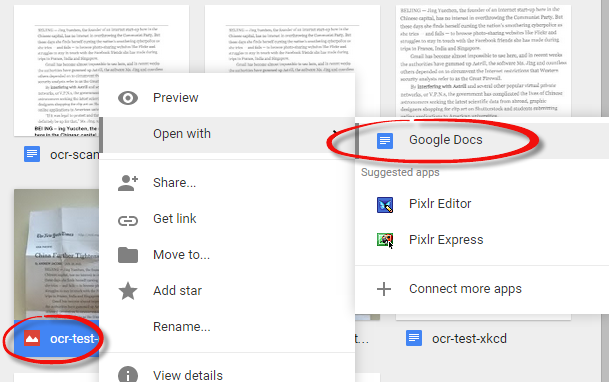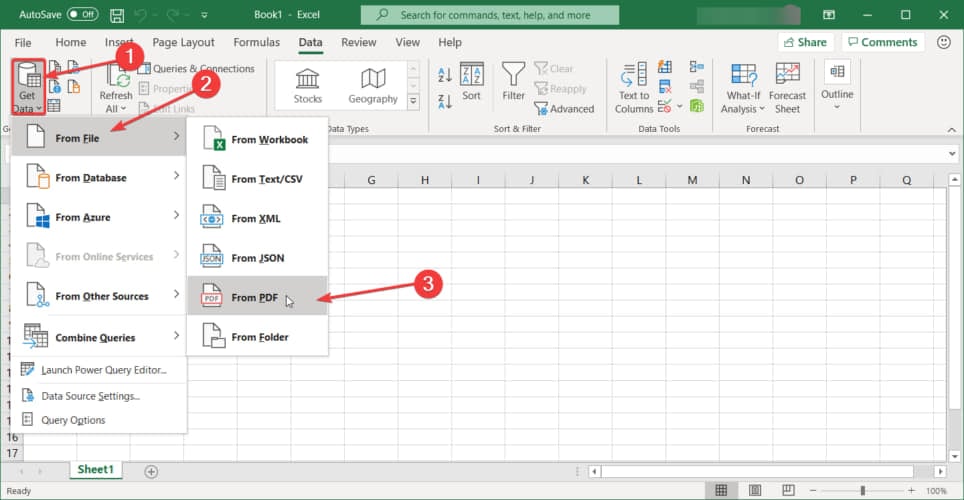Common PDF to Sheets Challenges
If you manage invoices, bank statements, or analytics reports, you already know the frustration: PDFs simply don't cooperate with spreadsheets. What should be a simple task, copying line items from a PDF invoice into Google Sheets, turns into a time-consuming ordeal of cleaning messy columns, normalizing numbers, and hunting down errors that inevitably slip through.
This guide walks you through practical, repeatable ways to convert PDF to Google Sheets without the manual headache. You'll discover when simple copy-paste is sufficient, how to leverage Google Drive's OCR capabilities, how Excel's hidden import feature can save you time, and how to use Inboxparser to automate reliable PDF-to-Sheets extraction from emails, one-off files, and recurring reports. By the end, you'll have a clear roadmap to import PDF to Sheets with properly structured rows and columns, handle scanned documents confidently, and keep everything synced automatically.
Why Google Workspace Teams Face the PDF Challenge
Google Workspace now commands approximately 50% of the global productivity software market. Around half of these organizations have fewer than 10 employees, making Google Workspace the go-to choice for small to mid-sized businesses, startups, and distributed teams. The platform has seen 30% usage growth since 2019, driven by its cloud-first approach, real-time collaboration features, and seamless integration across Drive, Sheets, Docs, and Gmail.
The top industries using Google Workspace include business services, retail, hospitality, consumer services, and manufacturing, all sectors that handle high volumes of invoices, receipts, vendor statements, and financial reports in PDF format. For these teams, Google Sheets serves as the central hub for financial tracking, budget management, expense reconciliation, and reporting. Unlike traditional desktop software, Sheets allows multiple team members to access and update data simultaneously from anywhere, making it ideal for remote teams and distributed finance operations.
However, this cloud-first workflow hits a major roadblock: PDFs. While Google Workspace excels at collaboration, it lacks native tools for extracting structured data from PDF documents. Finance teams find themselves stuck in a frustrating loop, receiving invoices and statements as PDF attachments in Gmail, manually copying data into Sheets, cleaning up formatting errors, and repeating this process dozens or hundreds of times each month.
Why Automated Google Sheets Integration Matters
For accountants and financial analysts working within Google Workspace, the workflow sounds straightforward: collect PDFs containing invoices, receipts, or monthly statements, extract the key fields and tables, then run your calculations in Sheets. In practice, however, this process is riddled with friction points.
PDFs were designed for viewing and printing, not for data extraction. When you copy and paste, you preserve visual formatting but lose the underlying structure. Scanned PDFs require OCR technology, and accuracy varies dramatically based on scan quality and layout. Line items frequently span multiple pages or include merged cells that break during extraction. These repetitive manual steps introduce inconsistencies and delays that compound over time.
Automation fundamentally changes this equation. A dependable PDF to Sheets converter allows you to extract PDF data into consistent columns with proper data types, automatically normalize dates, currencies, and vendor names, and maintain a single source of truth in Google Sheets that feeds downstream processes like dashboards, reconciliations, and audit trails. The result is fewer errors, faster month-end closes, and significantly more time available for analysis work. This guide focuses on reproducible methods that scale beyond one-off fixes, helping you establish ongoing, low-maintenance workflows.
Method 1: Manual Copy-Paste for Simple Tables
Best for clean, text-based PDFs with simple table structures, straightforward reports with clear rows and columns, no complex formatting, and no scanned elements.
Steps:
- Open the PDF in a viewer that supports text selection (Chrome, Adobe Acrobat, or Preview on Mac)
- Select and copy the table area, then paste directly into Google Sheets
- Navigate to Data → Split text to columns and choose an appropriate delimiter (tab or comma)
- Clean up your data:
- Remove extra spaces with
=TRIM() - Strip currency symbols using Find and Replace (replace "$" with blank)
- Standardize dates with
=DATEVALUE()
- Remove extra spaces with
Limitations:
Inconsistent spacing in the original PDF will break column alignment, requiring tedious fixes. Scanned PDFs won't work at all since you can't select text that's actually an image. Multi-page tables become a repetitive chore. For occasional extraction from well-formatted PDFs, this works, but it doesn't scale.
Method 2: Google Drive OCR for Scanned Documents
Works for scanned PDFs or image-based documents, though it requires substantial cleanup. See more details from this Google's answer 
Steps:
- Upload your PDF to Google Drive
- Right-click → Open with → Google Docs (Drive automatically runs OCR)
- Copy the resulting text or table into Google Sheets
- Clean and reformat: use Split text to columns, apply
TRIM(), and useVALUE()to convert text to numbers
Limitations:
OCR accuracy depends heavily on scan quality and document layout. Clean, high-resolution scans with standard fonts typically produce good results, but low-quality scans or complex layouts lead to frustration. Table structures often collapse during conversion, with merged cells becoming particularly messy. Complex invoices frequently require substantial manual cleanup that defeats the purpose of automation.
For better OCR reliability and less post-processing, explore specialized tools designed for business documents.
Method 3: Excel's Import PDF Feature
Use when you have desktop Excel (not Excel Online) and need cleaner extraction than Google Drive OCR, but aren't ready to set up full automation yet. Excel's built-in Data → Get Data → From PDF feature is remarkably good at recognizing proper table boundaries, even with borders, headers, or multi-row column labels. 
Workflow:
- Open Excel → Data → Get Data → From File → From PDF
- Excel auto-detects every table inside the PDF → click the one you want
- Preview the extracted table → click Load or Transform for optional cleanup
- File → Save As → .xlsx
- Open or upload that file into Google Sheets—column integrity is preserved
Pros:
Often cleaner extraction than Google Drive OCR. Preserves column boundaries with impressive accuracy. Can preview and selectively pick multiple tables from a single document.
Cons:
Requires Excel on Windows or Mac—not available in Excel Online. Still manual with multiple export/import steps. No auto-sync; best for semi-recurring analysis, not daily pipelines.
Method 4: Full Automation with Inboxparser
Best for recurring invoices, documents from multiple vendors with different layouts, email attachments that need processing, or any scenario requiring auto-updating Sheets.
Prerequisites:
- Google account with Drive and Sheets access
- Inboxparser account (free trial available)
Setup (5 minutes):
- Install the Inboxparser Sheets Add-on from Google Workspace Marketplace
- Open your target Google Sheet
- Click Extensions → Inboxparser → Extract Data
- Configure your first table template:
- Select from presets (Invoice, Receipt, etc.)
- Or define each column from scratch
- (Optional) Activate Gmail automation: In the Inboxparser web app, configure email document extraction. Then forward any email with PDF attachments to your unique Inboxparser address, data automatically extracts and posts to your Google Sheet.
Pro Tips:
- Include columns for file metadata (filename, source URL) to create an audit trail
- Use fast parsing mode for digitally generated PDFs (e.g. Stripe invoice, etc.) to save processing credits
Refer to our Google Sheets Add-on guide for more detailed setup.
Choosing the Right Method
| Method | Best Use Case | Accuracy | Setup Effort | Handles Scans | Automation | Cost |
|---|---|---|---|---|---|---|
| Inboxparser automation | Mixed layouts, recurring inputs | High | Low (after setup) | Yes | Yes | Paid (trial available) |
| Excel Import PDF | Digital PDFs, semi-regular use | Medium-High | Medium | No | No | Excel license required |
| Manual copy-paste | One-off clean PDFs | Medium | Medium | No | No | Free |
| Google Drive OCR | Scanned documents, basic tables | Low-Medium | High | Yes | No | Free |
Frequently Asked Questions
Can I convert PDF to Google Sheets in multiple languages?
Yes. Both Inboxparser and Google OCR support numerous languages, though extraction quality depends on font clarity and scan resolution.
How do you handle multi-currency amounts?
Extract the numeric value and currency code into separate columns, then apply conversion rates in downstream formulas. This maintains data integrity while allowing flexible reporting.
Are password-protected PDFs supported?
No, unless you provide the password and unlock the file before upload. Most tools can't bypass this security feature.
Can I import images or receipts embedded in emails?
Yes—forward the email to Inboxparser and images are automatically processed through OCR to extract relevant data fields.
Do I need to code?
No. All steps in the Inboxparser automation method are completely no-code. Everything happens through visual interfaces.
Start Automating Your PDF Extraction
You now have four dependable options to convert PDF to Google Sheets, each suited to different scenarios. Quick manual copy-paste serves simple one-off cases. Google Drive OCR tackles scanned documents when you need a free solution. Excel's Import PDF feature provides superior extraction quality for digital documents if you have desktop Excel. Inboxparser delivers automated, accurate extraction at scale for teams handling recurring documents or high volumes.
The right choice depends on your situation. If you're processing the same vendor's invoices every week, reconciling monthly statements from multiple sources, or handling dozens of expense receipts, automation transforms a time-consuming chore into a reliable background process. With a solid parser, you can extract PDF data consistently, normalize it according to your standards, and keep your Sheet updated automatically from email attachments.
Ready to reclaim those hours spent on manual data entry? Start with Inboxparser to build a stable pipeline from your inbox to Sheets. Sign up for a free trial today and test it with your actual documents.



